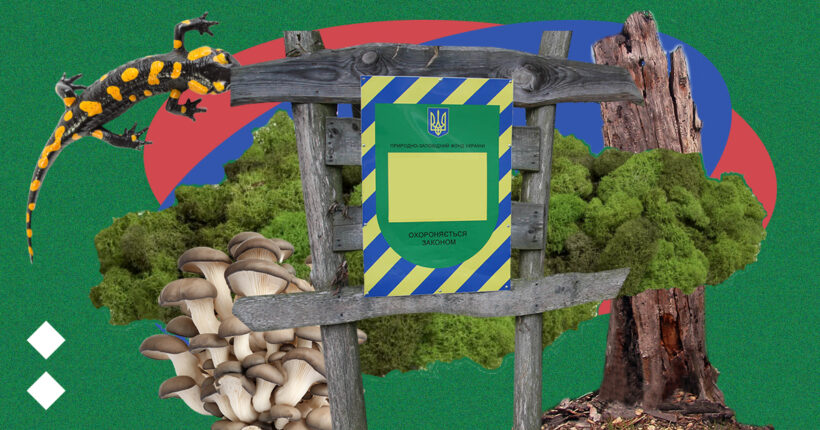
What is the problem?
In Ukraine, approximately one-fifth of the entire area of the nature reserve fund, about 800,000 hectares, has been damaged or is under occupation. In addition, problems still exist with the construction and human influence on those untouched corners of nature that have survived.
Additionally, several documents oblige Ukraine to transform more territory into nature reserves. For example, the EU Association Agreement, which became the basis for the State Strategy for Sustainable Development, requires the reservation of 15% of the total area of Ukraine by 2030. So far, only 6.7% of Ukraine's territory is in the nature reserve fund. In addition, according to the European forest strategy, by 2030, all old-growth forests should be preserved, as they support preserving biodiversity and adaptation to climate change.
What is the solution?
The solution here is obvious — reserving territories under threat of destruction is necessary.
WWF-Ukraine, together with environmentalists, undertook this mission, and chose the picturesque Arshytsia ridge in the Gorgany massif in Ukraine's western Ivano-Frankivsk region as one of the objects.
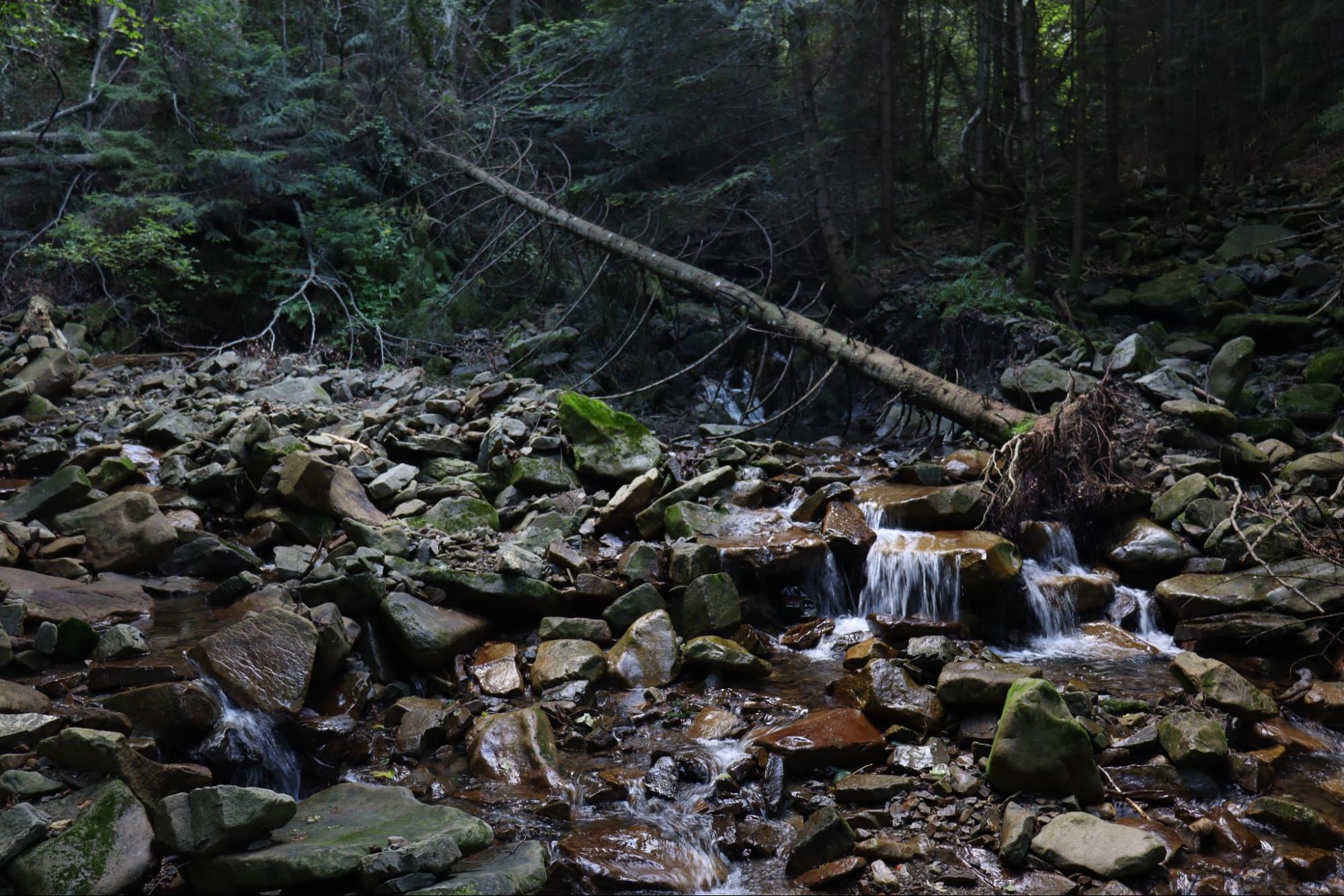
The upper stream Ilemka is within the future protected area.
The uniqueness of this object lies in the fact that most of its forest areas are more than 300 years old and are mixed forests, where white fir grows — the main decoration of this nature reserve, as well as forest beech, sycamore, and spruce. This is exactly how most of the Gorgany forests looked before their active forestry use by man.
The struggle for reserving Arshytsia's has lasted for six years
The history of creating a nature conservation facility on Arshitsa has lasted six years and resembles an adventure film with sudden plot changes.
"We made the first visit to examine these areas back in 2018," comments Mykhailo Bogomaz, Acting Director of the Forests department of WWF-Ukraine. Then, there were initial attempts to take this territory under protection in 2019, but the then-land user refused consent. The main reason is that most of those areas had to be felled by so-called reforestation felling, which was allowed in high-altitude forests (forests above 1100 m above sea level). However, in 2021, they were banned in the Carpathians, which, in fact, increased the chances of creating a nature reserve area.
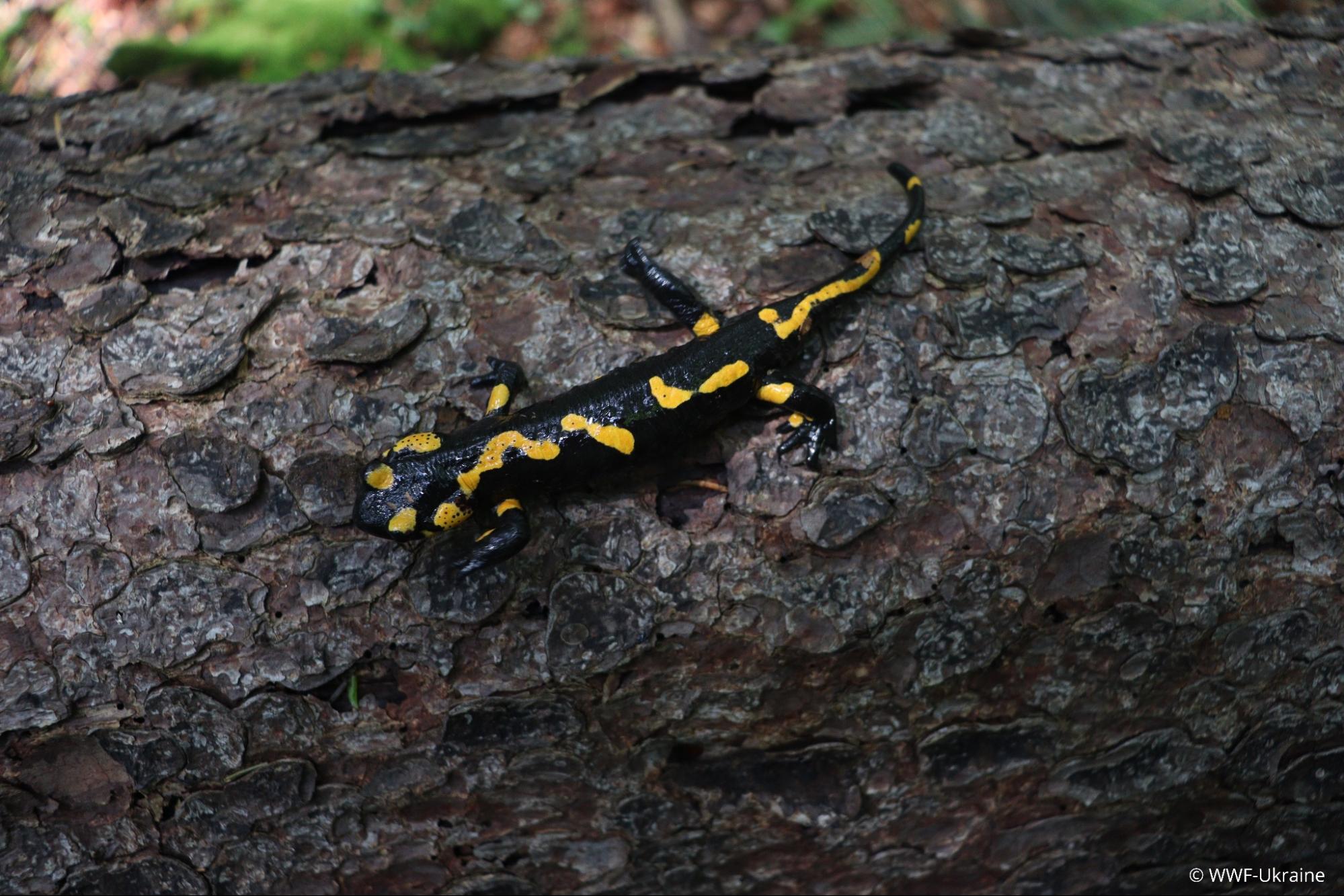
A spotted salamander found during the WWF-Ukraine expedition in 2021
In 2021, the scientists made another visit to the unexplored areas and collected additional material that proves the area's value. Then, they found many new areas of forests with ancient white firs and new species of plants and animals, which are listed in the Red Book of Ukraine.
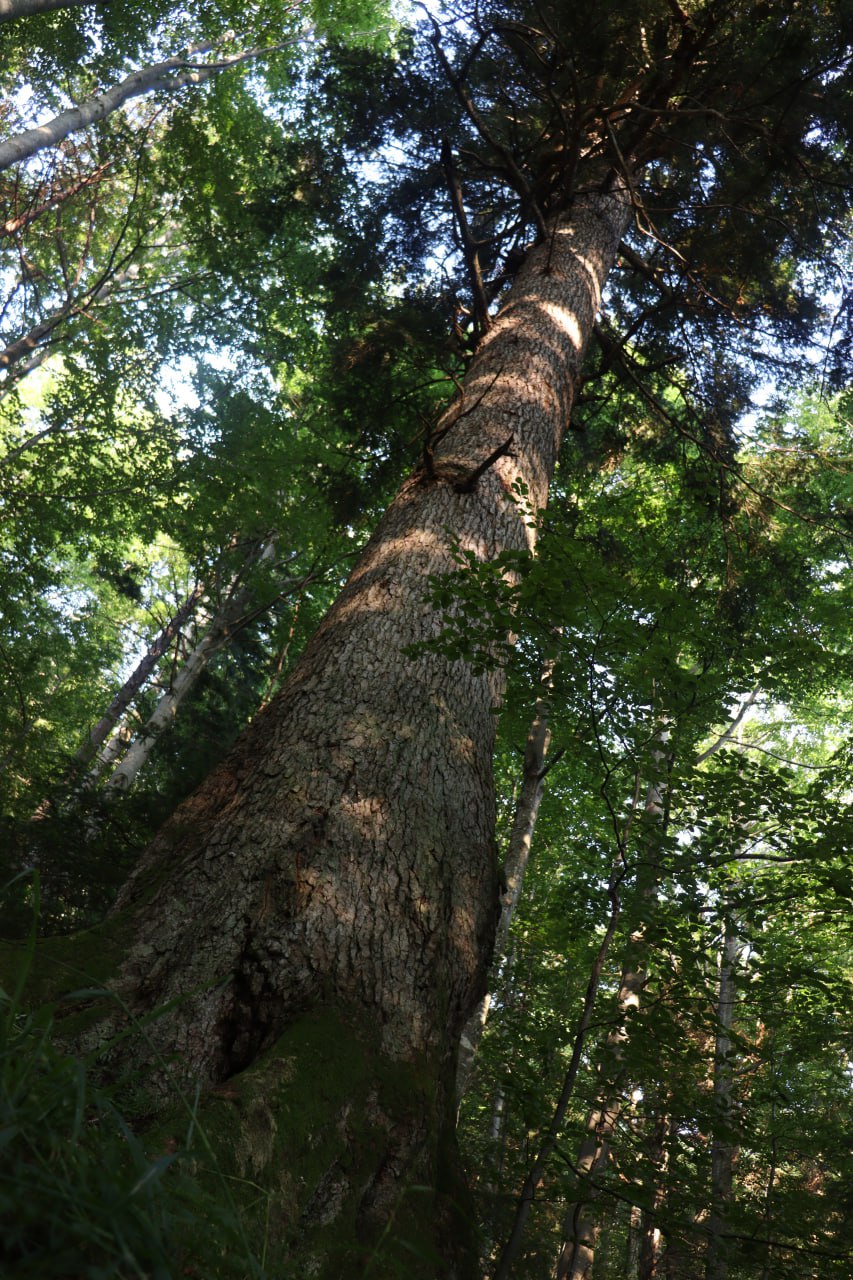
The photo shows an ancient white fir over 300 years old. Preservation of such ancient forests is essential not only for Ukraine but also for the whole world. WWF-Ukraine Expedition, 2021.
Among the herbaceous plants, WWF-Ukraine experts found annual plantain, northern firmoss, forest lily, and bird's-nest orchid, among the mushrooms — a ram's head and comb coral mushroom. The scientists also discovered a three-toed woodpecker, a long-tailed owl, a spotted salamander, tetradontophora bielanensis, a rare snail — the Carpathian blue slug, and a brown bear. All these are significant findings since the presence of rare species in the territories is the basis for reserving these territories and, therefore, limits their use for economic activities.
"Based on this, we began to prepare documents for creating a forest habitat: scientific substantiation of the value of this territory and cartographic materials. However, the war paused the process of approval of documentation by the Ministry of Environment and Forests of Ukraine," says Bogomaz. The process was resumed only at the end of 2023.
The future nature reserve will cover an area of more than 200 hectares. It will be adjacent to several primeval forest natural monuments of local importance, where old-growth forests and quasi-old-growth forests of the Ilemnyanskyi, Lugivskyi, Sukhodilskyi, and Lypovytskyi forestry departments are protected.
Logging is allowed in habitats or species management areas. Will this status protect Arshytsia?
Nature reserves are the most strict object in terms of the degree of protection in the structure. Logging or economic activity cannot be carried out there. Nature reserves only allow learning about natural processes and phenomena and carrying out scientific research on their study.
Habitats or species management areas have a much lower degree of protection. These are territories with a partially protected regime, where not the entire natural complex is protected, but individual or several components of nature, most often, certain species of plants or animals, geological or historical-memorial objects. Certain types of economic activity are allowed there, but only those that do not affect the object of protection. Therefore, Arshytsia should receive exactly this status.
Bogomaz explains why Arshytsa is a habitat or species management area. The procedure for creating a nature reserve or a national park is even more complicated and, accordingly, stretched over time. In addition, the area of Arshytsia is insufficient for such categories.
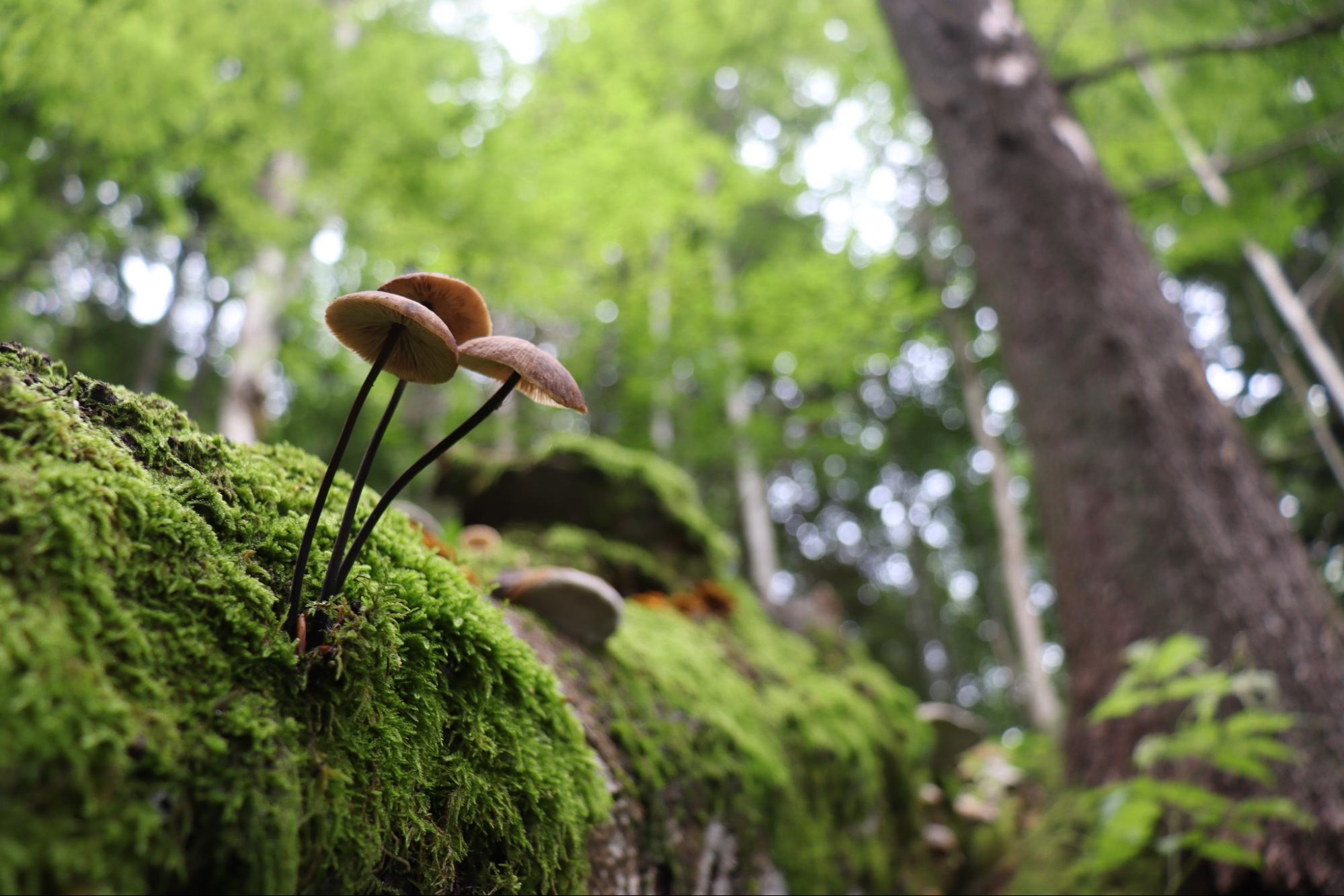
WWF-Ukraine expedition, 2021.
Currently, selective sanitary felling is allowed in management areas. Sometimes, if we are talking about areas with forest crops, in particular, with the participation of invasive species, it is even advisable to do this. However, in addition to the actual direct norms of the legislation that prohibit this or that forestry activity, there is also the so-called provision on the management areas, which clearly prescribes which activities are allowed and which are not on the territory of the reserves. "In our draft regulations on the management areas, we prescribed a complete ban on forestry activities," Bogomaz comments.
Bogomaz adds that the area's national importance will provide additional protection. Therefore, the Ministry of Environment will approve all documents for one or another activity.
"In fact, it is unlikely that any forestry or other activities will be carried out here, as they will be economically unprofitable due to the territory's difficult accessibility, some bans on felling in high-altitude forests, and complicated procedures for obtaining permits due to the status of a state object," says Bogomaz.
Will Arshytsia become a habitat or species management area?
The first victory is that the decision to create the Arshytsia habitat was supported and approved by Forests of Ukraine in March 2024. However, there is still a lot of work ahead. The next stage is the development of a project for the Decree of the President of Ukraine, so it is difficult to say exactly when Arshytsia will become a habitat because all bureaucratic procedures can drag on. However, the WWF has a positive attitude. Since the beginning of the full-scale war, not a single object of the nature reserve fund of national significance has been created. Therefore, it is difficult to predict when this may happen. Fortunately, work continues in some regions on the creation of new objects for the nature reserve fund of local importance. So, in 2023, at the initiative of WWF Ukraine, primeval forest monuments of local importance were created within the Ivano-Frankivsk and Zhytomyr regions, with a total area of more than 4,000 hectares.
Currently, WWF-Ukraine is calling on the Ministry of Environmental Protection and Natural Resources of Ukraine, the Cabinet of Ministers of Ukraine, and the Office of the President of Ukraine to support the decision to grant the appropriate protective status for more than 200 hectares of forests in the Arshytsia mountain massif.
Newsletter
Digest of the most interesting news: just about the main thing







